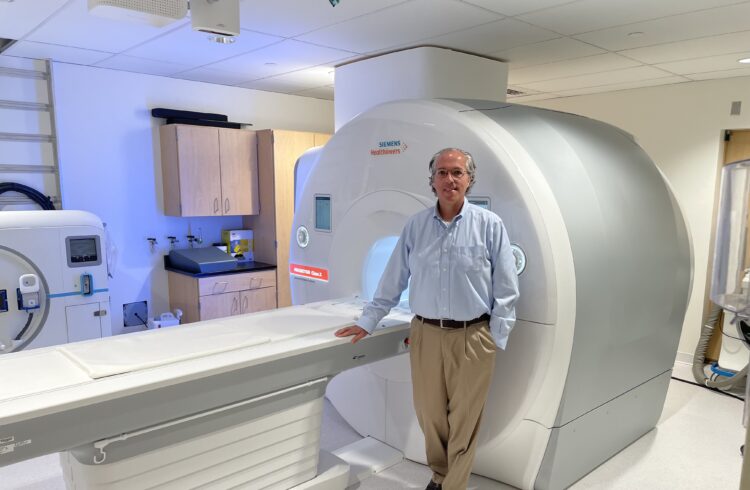
Scalpel-free surgery using focused sound waves appears to be as effective at treating essential tremor as traditional surgery that requires drilling into the skull, a groundbreaking clinical trial at the University of Virginia Health System has found.
All 15 participants in UVA’s trial saw a substantial reduction in their involuntary shaking after undergoing the experimental procedure using focused ultrasound. The rate of side effects was similar to that of traditional brain surgery. The patients were able to leave the hospital the next day.
UVA neurosurgeon Jeffrey Elias, MD , the trial’s principal investigator, is presenting the findings today at the 80th Annual Scientific Meeting of the American Association of Neurological Surgeons in Miami.
“It’s really profound, because [focused ultrasound] dramatically improves their quality of life and alleviates all their disabilities in day-to-day activities. These people have problems doing the basic things we take for granted, like eating soup, or teeing up their golf ball, using a screwdriver,” Elias says. “They can do all those things after the treatment.”
Inspired by the success of the trial, UVA researchers are looking to expand their research to include 15 more essential tremor patients and to evaluate focused ultrasound’s potential for treating tremor in patients with Parkinson’s disease .
Focused ultrasound: Interest worldwide
The cutting-edge clinical trial grabbed headlines around the globe last year when the first procedure produced dramatic results. Billy R. Williams, a 74-year-old from Fort Valley, Va., went from being unable to feed himself cereal to doing a crossword in the recovery room after his surgery. Focused ultrasound was subsequently tested in 14 additional cases.
All 15 participants underwent the same procedure, in which sound waves are used to heat a tiny area of troublesome brain tissue enough to kill it, a process called “lesioning.” By using an MRI-guided focused ultrasound made by InSightec, Elias was able to target a highly precise location – he could actually determine the effects of the procedure before creating the lesion.
No implant needed
The standard treatment for essential tremor is a technique known as deep brain stimulation. That requires surgeons to drill holes in the skull – while the patient is awake – and run wires into the brain from a device that is permanently implanted in the chest. Because of the invasiveness of the procedure, many patients prefer to live with their tremor. If further testing bears out the promise seen in UVA’s pioneering clinical trial, focused ultrasound may one day offer a non-invasive alternative.
Elias recalls the excitement that took hold of his team as the trial revealed the power of focused ultrasound to treat essential tremor: “We were the first in the world to treat this with focused ultrasound, and after the success of the first patient, that was pretty infectious,” Elias says. “We realized what a great opportunity we had.”


